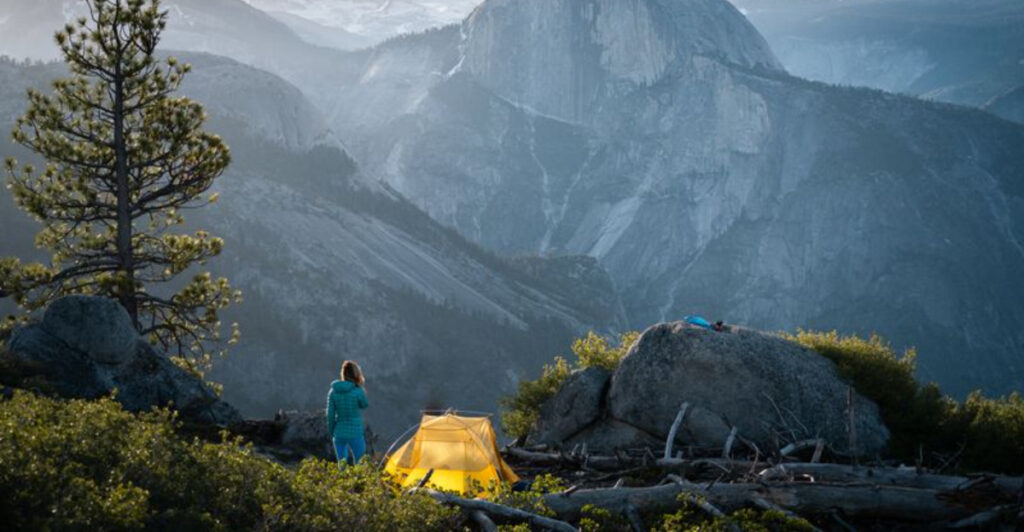America’s vast landscapes offer endless opportunities for outdoor enthusiasts to connect with nature. From towering mountain ranges to sprawling deserts, pristine lakes to rugged coastlines, the United States houses some of the world’s most breathtaking natural wonders. These twenty destinations showcase the country’s diverse ecosystems while providing unforgettable camping and hiking experiences for adventurers of all skill levels.
1. Glacier National Park, Montana
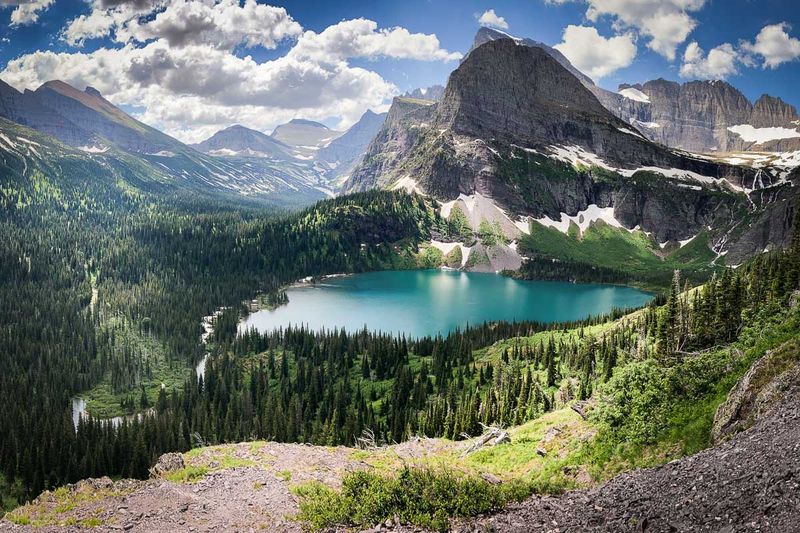
Known as the Crown of the Continent, this wilderness wonderland boasts over 700 miles of trails through pristine alpine terrain. Crystal-clear lakes mirror snow-capped peaks that seem to pierce the sky.
Grizzlies and mountain goats roam freely across meadows painted with wildflowers. The legendary Going-to-the-Sun Road provides access to popular trailheads, though backcountry permits offer the true Glacier experience—solitude among some of America’s most spectacular mountain scenery.
2. Great Smoky Mountains National Park, Tennessee/North Carolina
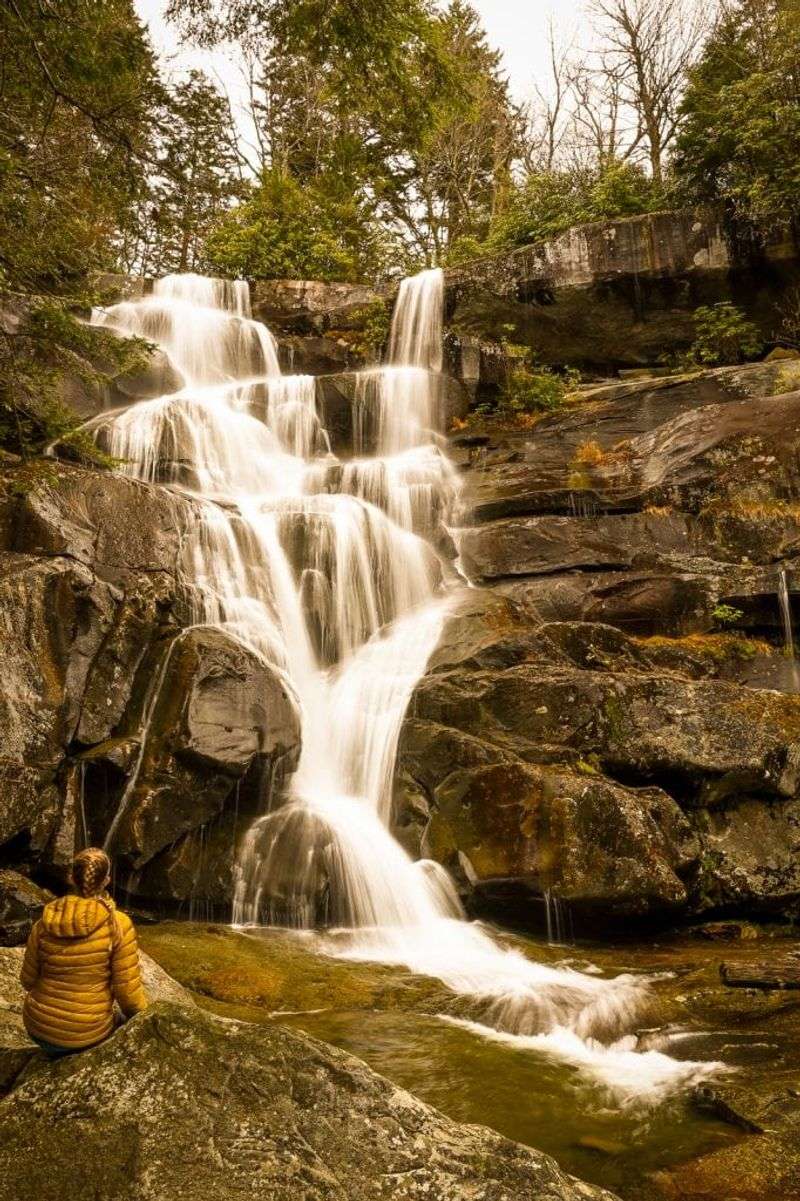
Morning mist weaves through ancient forests in America’s most visited national park. Spanning the Tennessee-North Carolina border, the Smokies harbor incredible biodiversity—over 19,000 documented species!
Campers can choose from developed frontcountry sites or secluded backcountry spots along the Appalachian Trail. Hike to thundering waterfalls like Ramsey Cascades or summit Clingmans Dome for panoramic views of rolling blue ridges stretching to the horizon.
3. Zion National Park, Utah
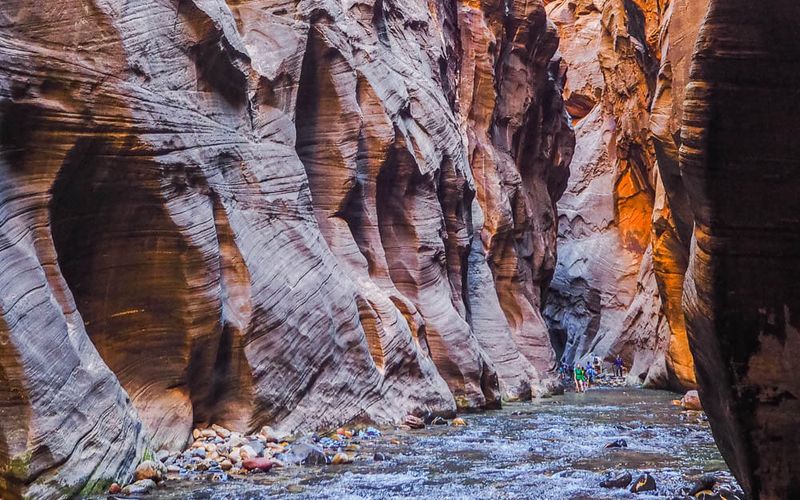
Rust-colored cliffs tower thousands of feet above the Virgin River in this desert sanctuary. The famous Narrows invites hikers to wade upstream through a slot canyon where walls narrow to just 20 feet apart.
Brave souls with permits can tackle Angels Landing’s knife-edge ridge with 1,000-foot dropoffs on either side. Watchman Campground provides a perfect base beneath star-filled skies, while backcountry sites offer solitude among Zion’s painted sandstone wonderland.
4. Yosemite National Park, California
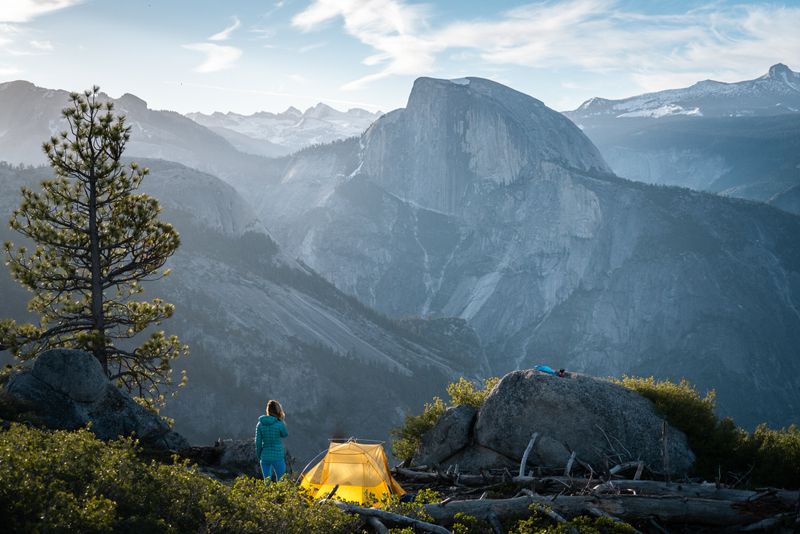
Granite giants like Half Dome and El Capitan stand sentinel over this Sierra Nevada paradise. The park’s 750+ miles of trails range from valley floor strolls to challenging summit routes.
Camp beneath towering sequoias or beside the Merced River, then tackle iconic hikes like the Mist Trail, where rainbows dance in waterfall spray. Winter transforms Yosemite into a quiet wonderland for snow camping and cross-country skiing.
5. Olympic National Park, Washington
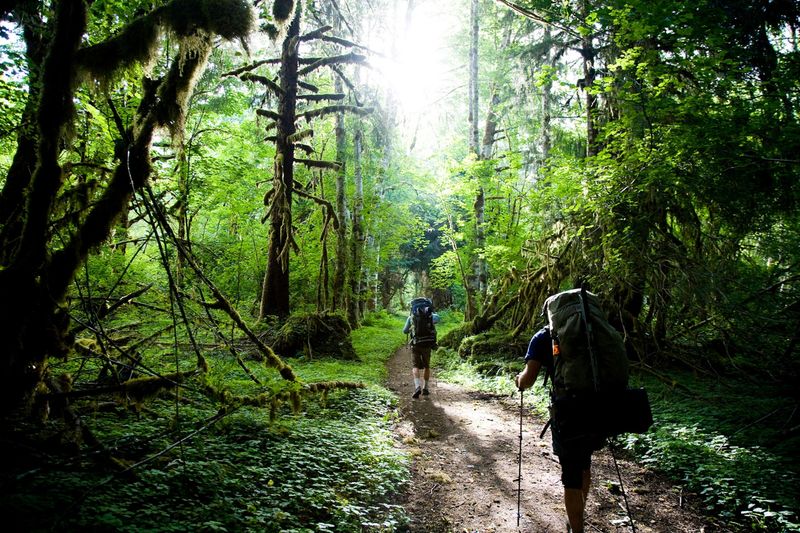
Three distinct ecosystems converge in this Pacific Northwest gem. Hike from rugged beaches with tidepools and sea stacks to temperate rainforests dripping with moss where thousand-year-old trees stand sentinel.
Alpine meadows burst with wildflowers beneath glaciated peaks in summer. Camp along the wild coastline at Shi Shi Beach, beneath towering cedars at Hoh Rainforest, or high in subalpine meadows with mountain goats for neighbors. This ecological trifecta offers year-round adventure possibilities.
6. Rocky Mountain National Park, Colorado
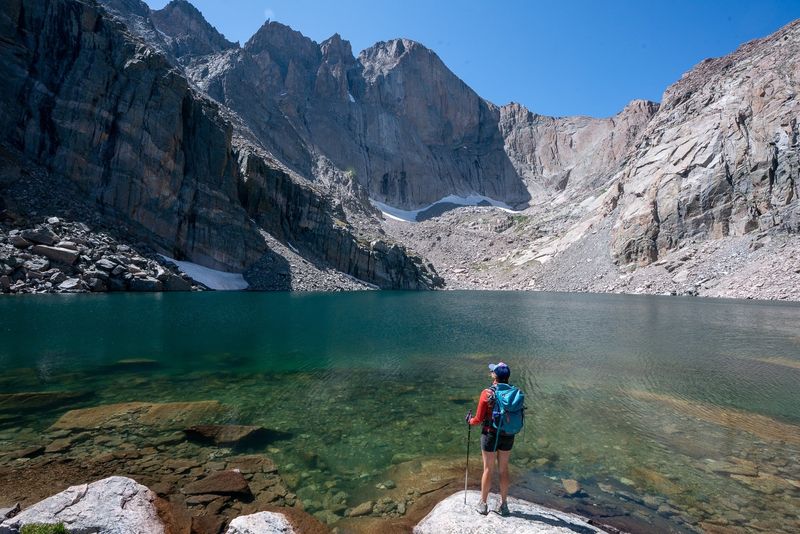
Alpine tundra stretches above treeline in this high-elevation playground where elk bugle and mountain peaks scrape the sky. Over 300 miles of trails traverse five ecosystems from montane forests to arctic-like tundra.
Summer wildflowers carpet meadows while fall brings golden aspen groves. Moraine Park Campground offers family-friendly amenities, but backcountry permits unlock pristine alpine lakes and secluded valleys. The spectacular Trail Ridge Road—America’s highest continuous paved road—provides access to breathtaking viewpoints.
7. Acadia National Park, Maine
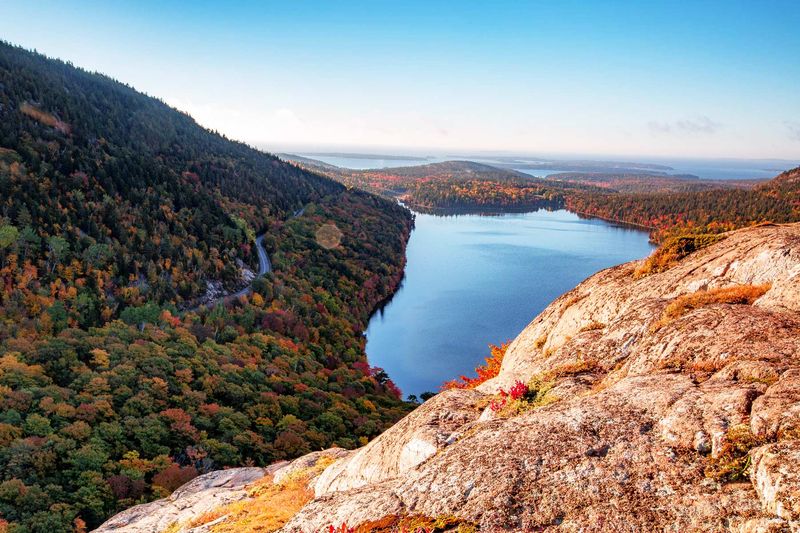
Granite peaks rise dramatically from the Atlantic Ocean on America’s rugged northeastern shore. This coastal gem combines mountain trails, pristine woodlands, and rocky beaches into one compact package.
Hike the iron-rung routes of the Beehive Trail or stroll historic carriage roads built by John D. Rockefeller. Blackwoods Campground provides easy access to popular trails, while watching sunrise from Cadillac Mountain lets you be among the first in America to greet the day.
8. Grand Teton National Park, Wyoming
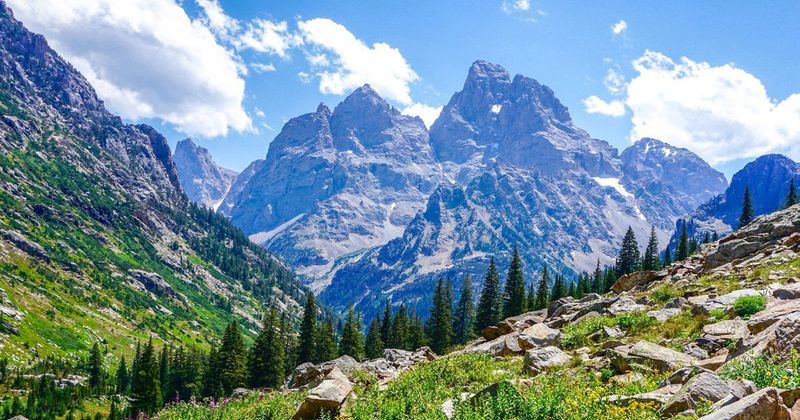
Jagged mountains rise abruptly from sage-covered valleys without foothills, creating one of America’s most dramatic landscapes. Alpine lakes shimmer like sapphires against the Tetons’ imposing granite backdrop.
Jenny Lake offers family-friendly trails and boat access to hidden cascades. For the adventurous, the 40-mile Teton Crest Trail traverses high alpine terrain with unparalleled mountain views. Signal Mountain Campground provides developed amenities, while backcountry permits allow camping beneath star-filled skies.
9. Shenandoah National Park, Virginia
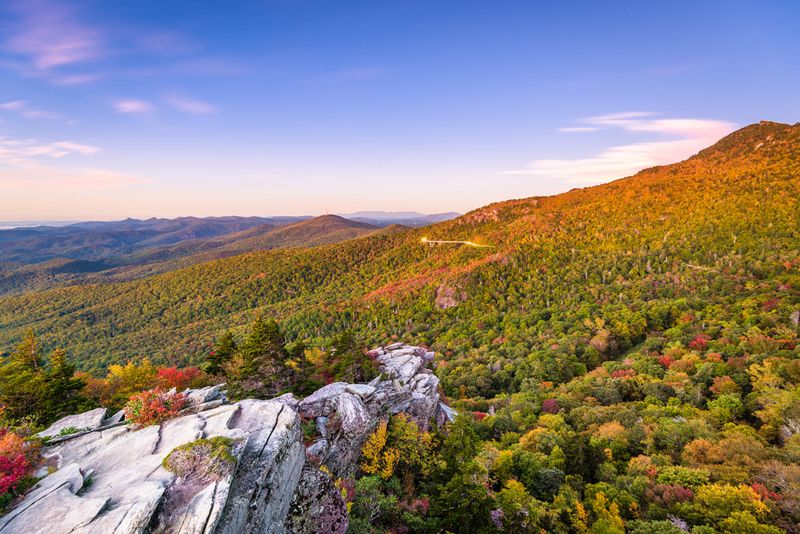
Rolling Blue Ridge Mountains stretch like waves across the horizon in this eastern woodland paradise. Skyline Drive winds 105 miles along the mountain crest, providing access to over 500 miles of trails, including 101 miles of the legendary Appalachian Trail.
Old Rag Mountain offers the park’s most challenging and rewarding hike with rock scrambles and 360-degree views. Mathews Arm Campground nestles among hardwood forests that burst into spectacular color each autumn, creating a photographer’s dream landscape.
10. Joshua Tree National Park, California
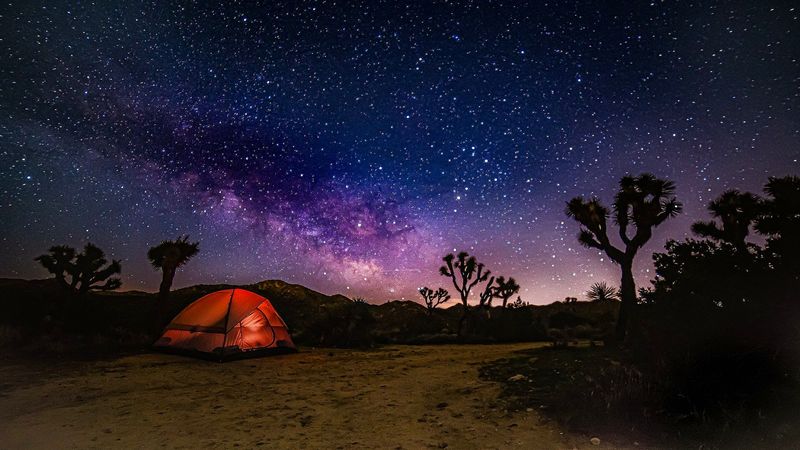
Two distinct desert ecosystems collide in this otherworldly landscape where twisted Joshua trees stretch toward brilliant night skies. Massive boulder piles create natural playgrounds for climbers and hikers alike.
The park transforms at night when darkness reveals one of America’s premier stargazing destinations. Hidden Valley Campground tucks between massive rock formations, providing shelter from desert winds. Spring brings brief but spectacular wildflower displays, painting the desert floor with unexpected color.
11. Mount Rainier National Park, Washington
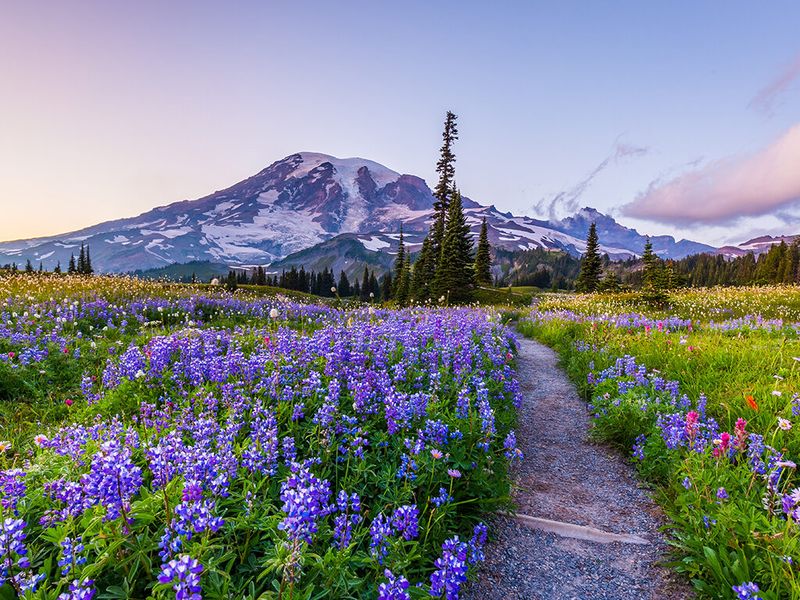
An active volcano crowned with glaciers dominates this alpine wonderland. Meadows explode with wildflowers during the brief summer season, creating spectacular displays against the backdrop of America’s most glaciated peak outside Alaska.
The 93-mile Wonderland Trail circumnavigates the mountain, crossing through diverse ecosystems. Cougar Rock Campground provides easy access to the Paradise area’s popular trails. Winter transforms Rainier into a snow-covered playground for snowshoeing and cross-country skiing beneath towering evergreens.
12. Arches National Park, Utah
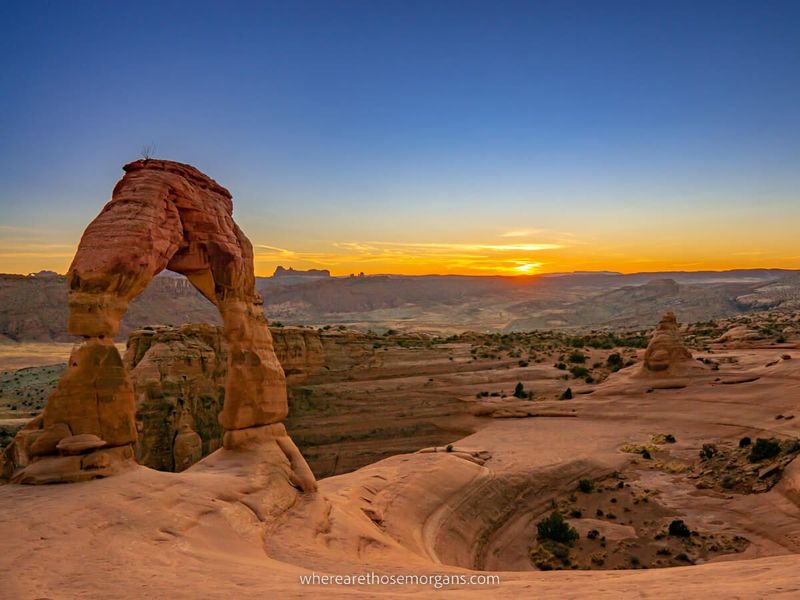
Over 2,000 natural stone arches punctuate a red rock landscape that seems imported from Mars. Delicate Arch stands as Utah’s unofficial symbol, framing distant mountains through its 52-foot opening.
Devil’s Garden Campground provides the only developed camping within park boundaries, though nearby BLM lands offer dispersed alternatives. Hike the primitive loop through fins and spires, or explore Windows Section’s accessible arches. Dawn and dusk transform the sandstone into a photographer’s paradise of glowing orange-red hues.
13. Big Bend National Park, Texas
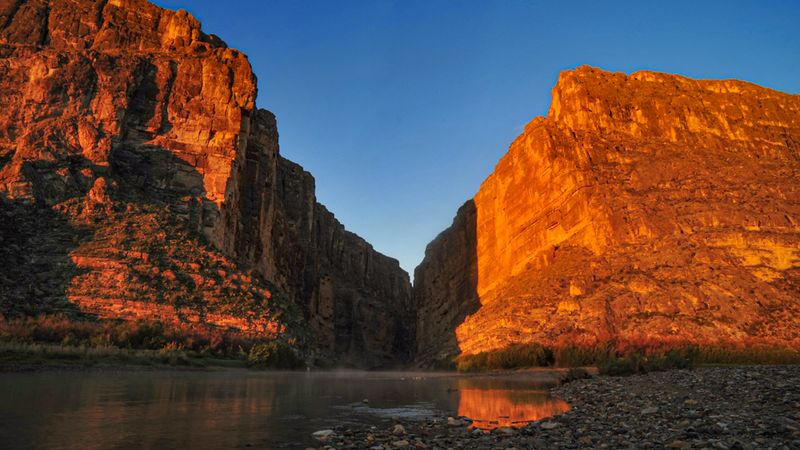
The mighty Rio Grande carves limestone canyons through this remote desert wilderness where mountain lions still roam. Three distinct ecosystems—river, desert, and mountains—converge in this international park bordering Mexico.
Soak in natural hot springs along the riverbank after hiking the South Rim Trail for expansive views across the Chihuahuan Desert. Chisos Basin Campground nestles within the park’s mountain heart, offering cooler temperatures than the surrounding desert floor. Night skies here rank among the darkest in the lower 48 states.
14. Adirondack Mountains, New York
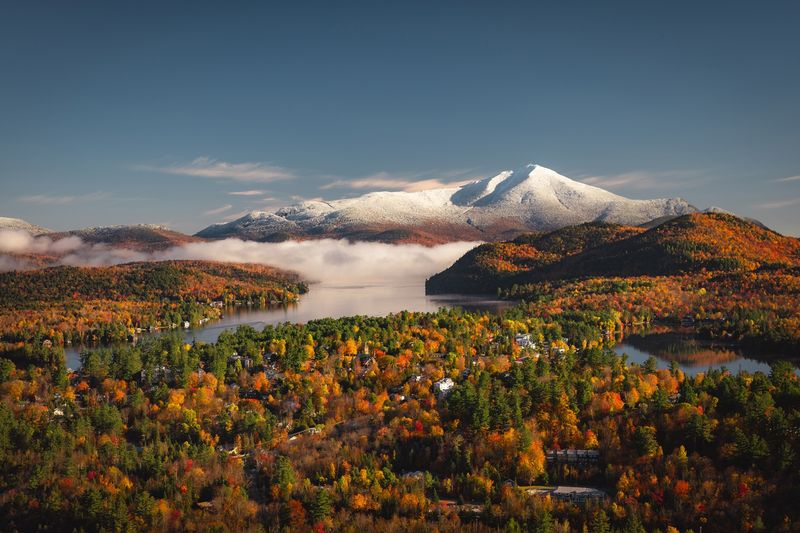
America’s oldest protected wilderness area encompasses six million acres of forests, lakes, and peaks. The Adirondack Park blends public and private lands into a patchwork of wild spaces larger than Yellowstone, Yosemite, Grand Canyon, Glacier, and Great Smoky Mountains National Parks combined.
Summit the 46 High Peaks or paddle interconnected waterways through pristine forests. Island camping on Lake George offers unique experiences, while lean-tos along hiking trails provide rustic shelter for backpackers exploring this eastern wilderness.
15. Bryce Canyon National Park, Utah
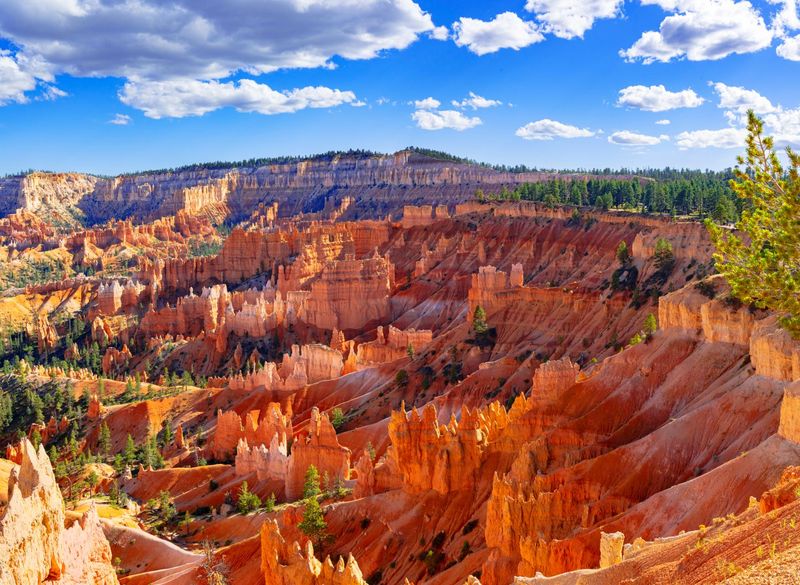
Thousands of delicate spires called hoodoos create a natural amphitheater unlike anywhere else on Earth. Erosion has sculpted these orange-pink formations into a fairytale landscape that changes with every angle and light condition.
The 8-mile Rim Trail provides spectacular viewpoints, while the Navajo Loop descends into the canyon among towering hoodoos. North Campground sits at 8,000 feet elevation, offering cool summer temperatures and winter cross-country skiing opportunities. Stargazing programs showcase some of America’s darkest night skies.
16. White Mountains, New Hampshire
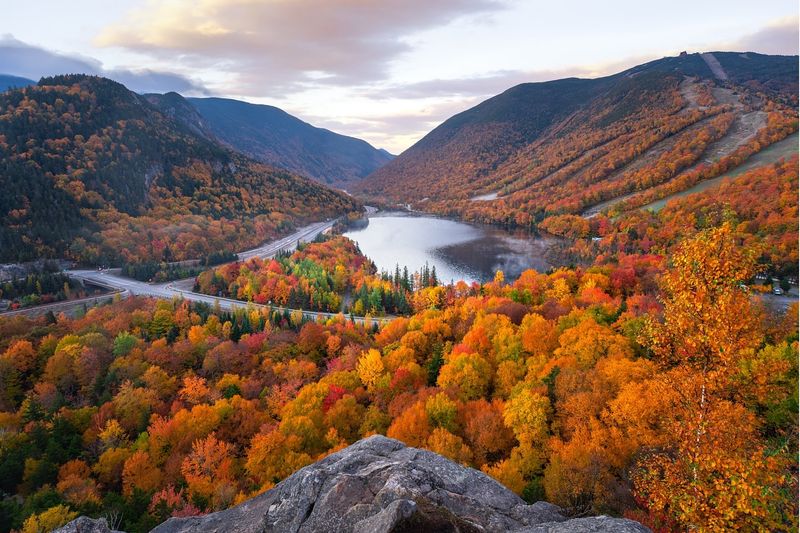
Rugged alpine terrain dominates this northeastern wilderness where unpredictable weather challenges even experienced hikers. The Presidential Range includes Mount Washington, infamous for recording some of the planet’s most extreme weather conditions.
The Appalachian Mountain Club maintains a unique hut system allowing multi-day traverses without heavy camping gear. Franconia Ridge offers one of the East’s most spectacular above-treeline hikes with panoramic views. Fall foliage transforms these mountains into a kaleidoscope of reds, oranges, and yellows.
17. Redwood National and State Parks, California
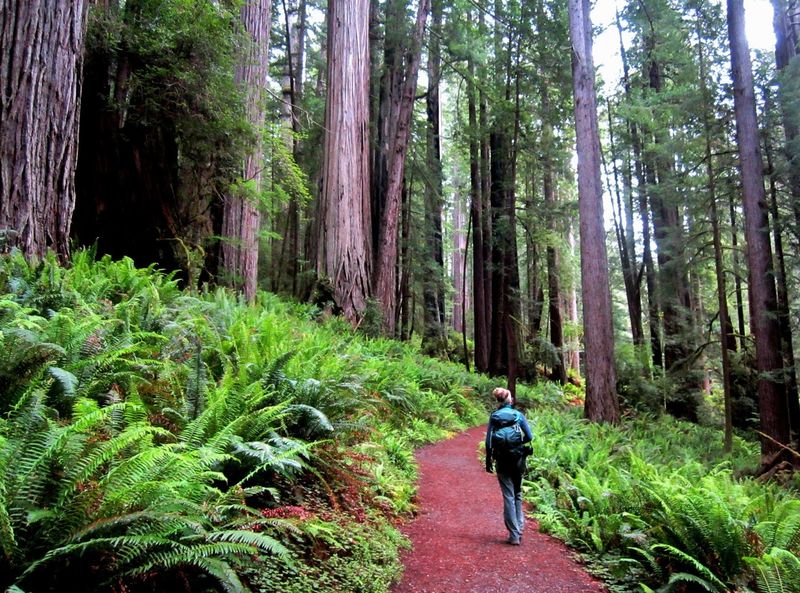
Ancient giants soar 350+ feet skyward in this temperate rainforest sanctuary. Some coast redwoods were already ancient when Romans built the Colosseum, creating a cathedral-like atmosphere on trails winding between these massive trunks.
Fern Canyon’s 50-foot walls drip with seven types of ferns in a scene so primeval it was featured in Jurassic Park. Gold Bluffs Beach Campground lets you sleep between redwood forest and Pacific Ocean. Roosevelt elk graze peacefully in meadows, while tidepools reveal colorful marine ecosystems along the rugged coastline.
18. Canyonlands National Park, Utah
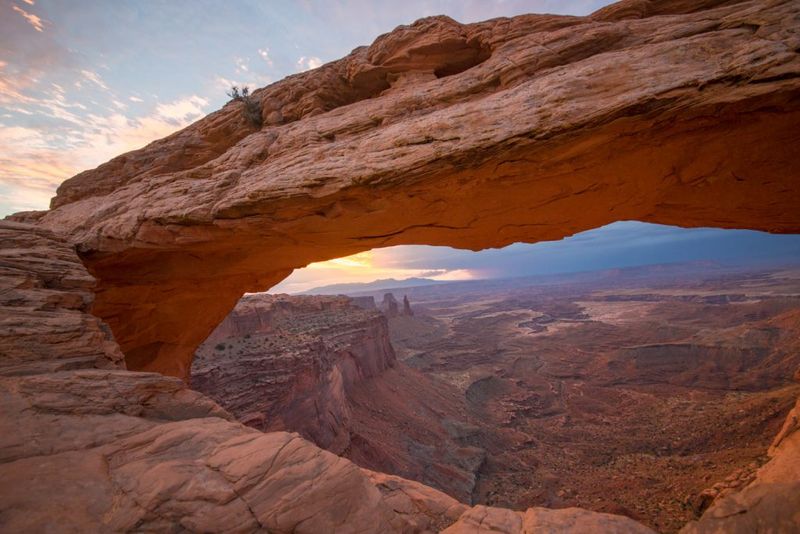
The Colorado River and its tributaries have carved this desert landscape into a maze of canyons, mesas, and buttes. Four distinct districts offer dramatically different experiences, from family-friendly Island in the Sky to remote backcountry in The Maze.
Mesa Arch frames a stunning sunrise view that photographers queue before dawn to capture. Chesler Park Loop in The Needles district winds through bizarre rock formations and slot canyons. Developed campgrounds exist in two districts, while backcountry permits allow camping beneath star-filled desert skies.
19. Denali National Park, Alaska
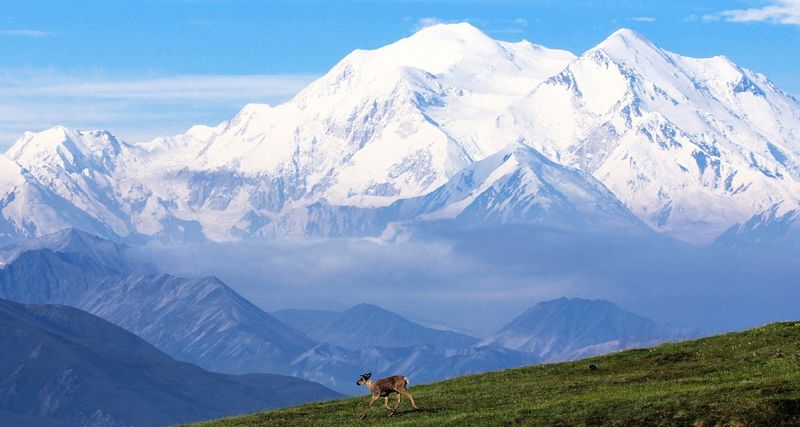
North America’s tallest peak dominates this subarctic wilderness larger than Massachusetts. Unlike most parks, Denali has few established trails—hikers create their own routes across tundra and through boreal forest.
Wildlife viewing opportunities abound, with grizzlies, wolves, caribou and moose roaming freely. Riley Creek Campground provides developed facilities near the entrance, while backcountry permits allow true wilderness camping. The park road extends 92 miles, but private vehicles can only drive the first 15—shuttle buses provide access to the remote interior.
20. Great Sand Dunes National Park, Colorado
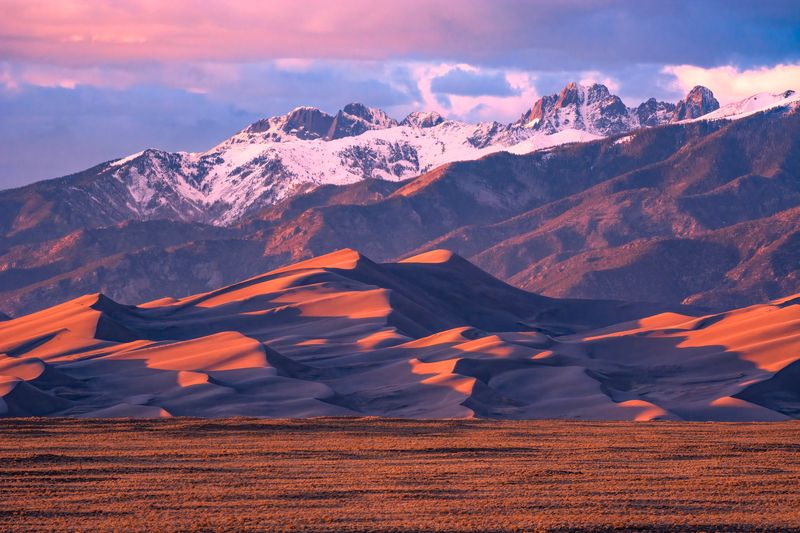
North America’s tallest dunes rise over 750 feet against the backdrop of snow-capped Sangre de Cristo Mountains. This surreal landscape transforms throughout the day as light and shadow play across the rippled sand surface.
Medano Creek creates a seasonal beach at the dunes’ base where families splash in shallow water. Hike the dunes early morning to avoid hot sand and create your own path—no designated trails exist on this constantly shifting terrain. Piñon Flats Campground provides developed sites, while backcountry permits allow camping directly on the dunes.

